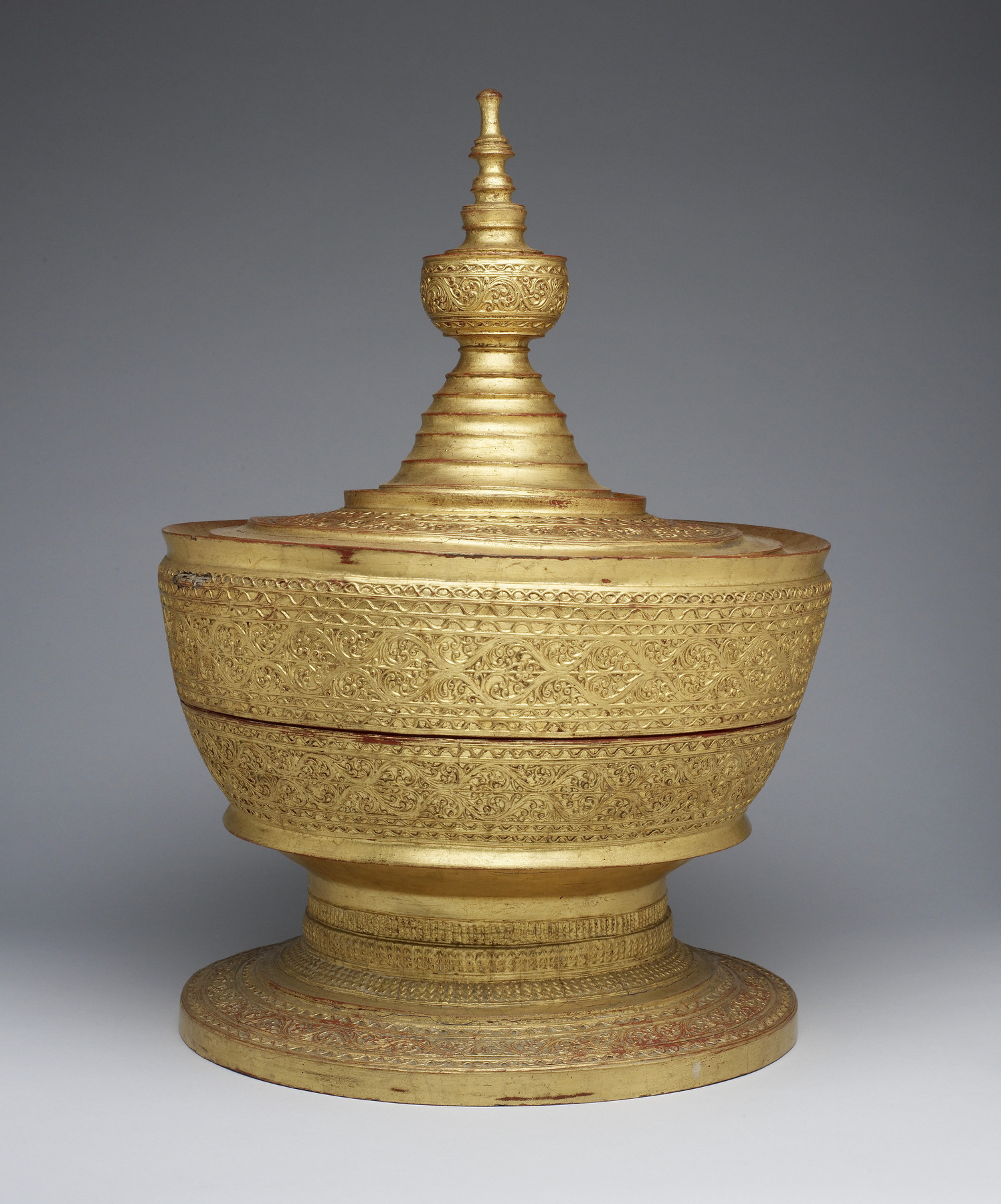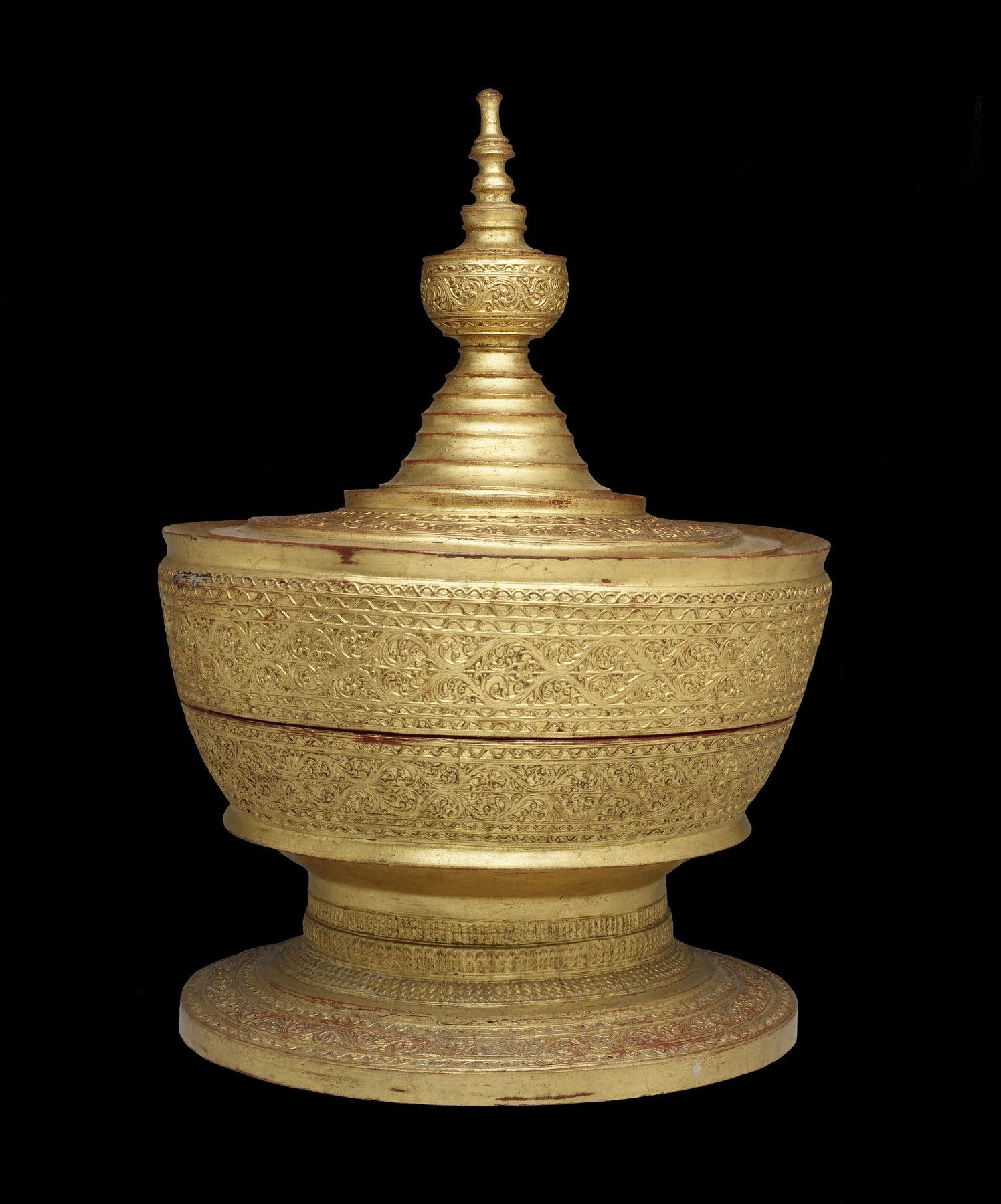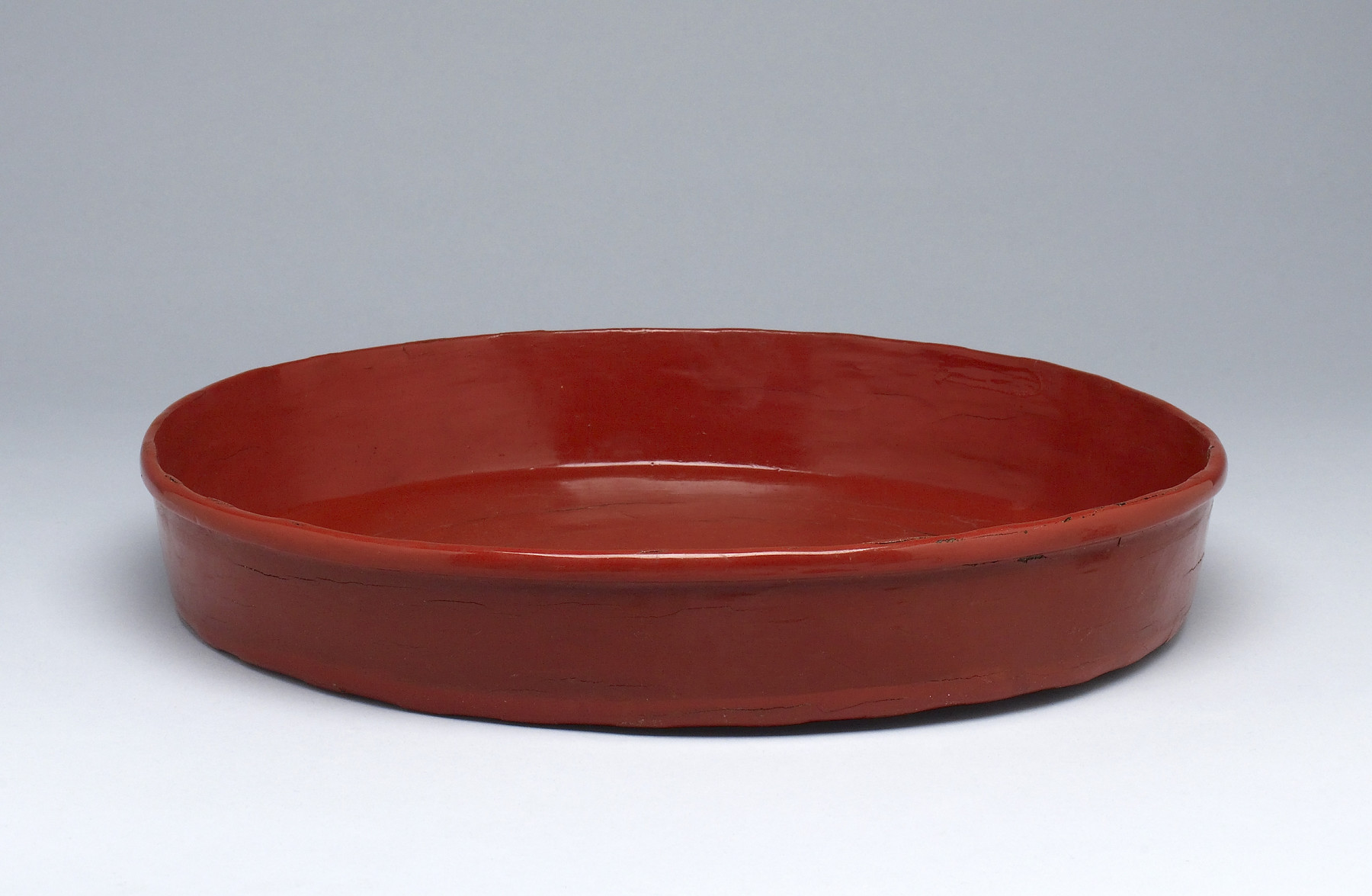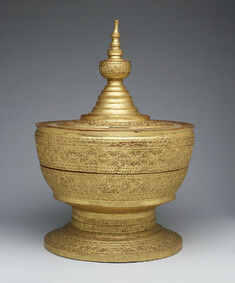Offering Container
(Southeast Asia )
Providing monks with their daily meals in exchange for prayers and religious teachings is considered an act of devotion. This spired offering vessel, known as "hsun-ok," was used to transport food to a temple or monastery. It has three parts: a bowl attached to a flaring pedestal, a pagoda-shaped cover, and an internal plainly lacquered tray on which food such as soup, curries, pickles, or rice might be placed.
Provenance
Provenance (from the French provenir, 'to come from/forth') is the chronology of the ownership, custody, or location of a historical object. Learn more about provenance at the Walters.
Yoshie Shinomoto; given to Walters Art Museum, 1993.
Conservation
| Date | Description | Narrative |
|---|---|---|
| 5/11/2017 | Examination | Examined and treated for exhibition. |
| 5/11/2017 | Examination | The surface was cleaned to remove accumulated dust and grime. One loss was consolidated to secure loose bamboo fibers and then toned using gilded Japanese paper. |
| 5/12/2017 | Treatment | cleaned; filled; inpainted; loss compensation; media consolidation |
| 5/12/2017 | Treatment | Surface was cleaned to remove a dirt, grime, and a wax coating. The lifting lacquer was stabilized with adhesive and losses were filled with toned Japanese tissue paper. |
Geographies
Myanmar (Place of Origin)
Measurements
H: 21 3/16 × Diam: 15 3/8 in. (53.8 × 39 cm); Lid H: 13 9/16 × Diam: 15 3/8 in. (34.5 × 39 cm); Tray H: 2 × Diam: 13 3/8 in. (5.1 × 34 cm); Base H: 9 3/16 × Diam: 14 7/16 in. (23.4 × 36.6 cm).
Credit Line
Gift of Mr. Yoshie Shinomoto, 1993
Accession Number
In libraries, galleries, museums, and archives, an accession number is a unique identifier assigned to each object in the collection.
In libraries, galleries, museums, and archives, an accession number is a unique identifier assigned to each object in the collection.
67.663











